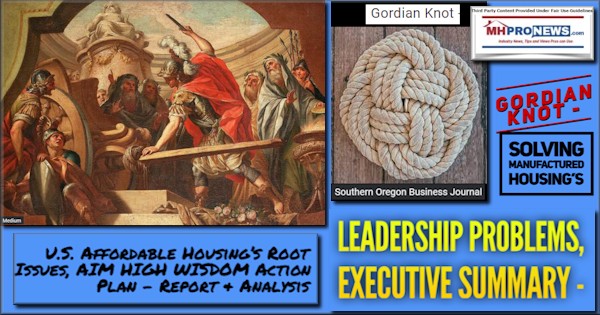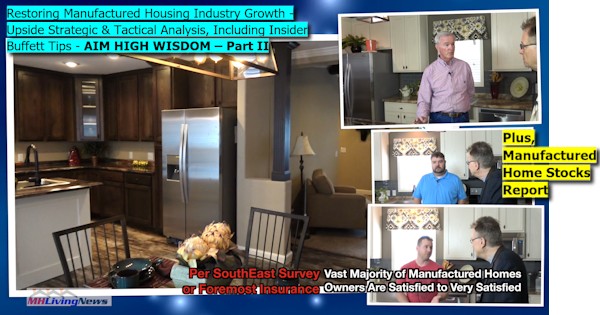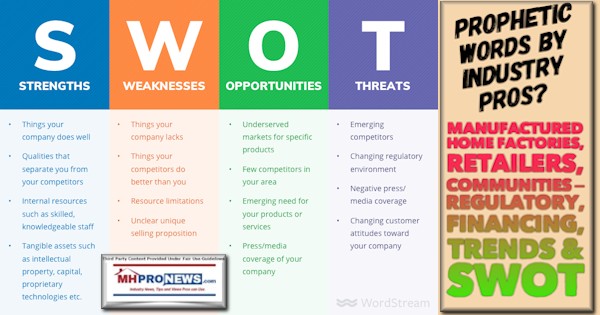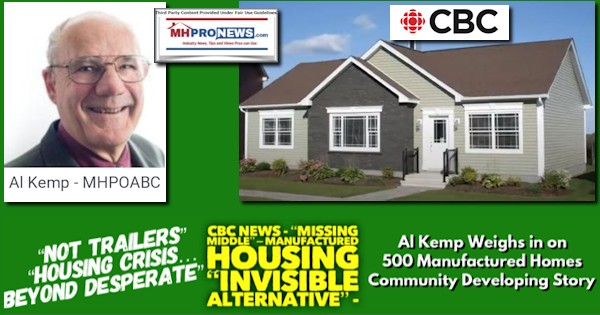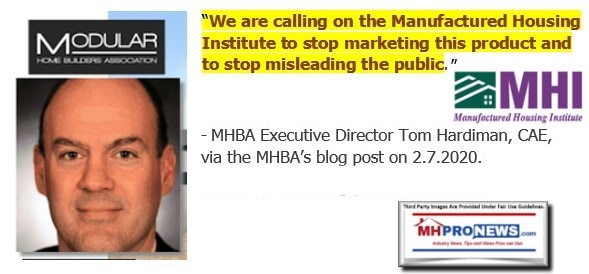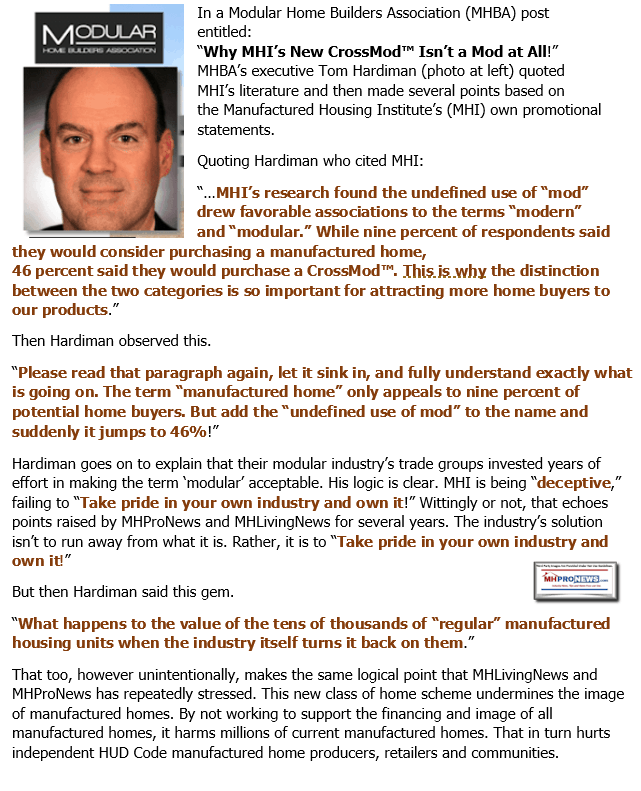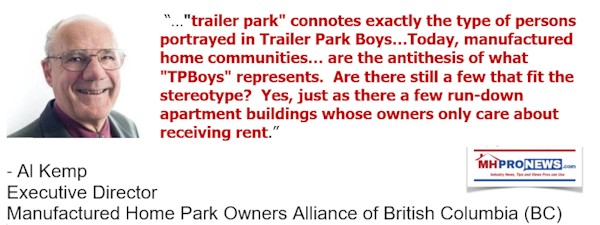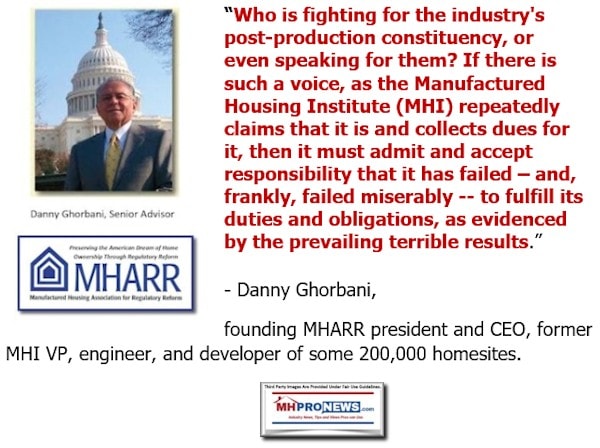“The housing crisis is beyond desperate; this development will provide high quality homes at a starting price of $200,000,” said Jennifer Tsang. “These are not trailers, these are manufactured homes.” According to CBC News, Cygnet Investments “has been trying to develop the 436-hectare property for nine years.” Jennifer Tsang, with Sunrose Consulting, represented the developer. Despite local push-back, the project was finally given the green light for the first phase of 125 units during a meeting on April 12, 2021.
They can begin what is a planned 525 homesite manufactured home community in Halifax, Nova Scotia, Canada as utilities and other items make that possible.
That’s per the Canadian Broadcasting Corporation or CBC News division. CBC has radio, television, and internet news platforms. Canada has an affordable housing crisis that at a glance may make the one in the U.S. seem tame by comparison.
But each nation has something to learn from the other. Who says? Canadian Al Kemp, among others, in some comments shared with MHProNews about what he calls “The Invisible Affordable Housing Alternative.”
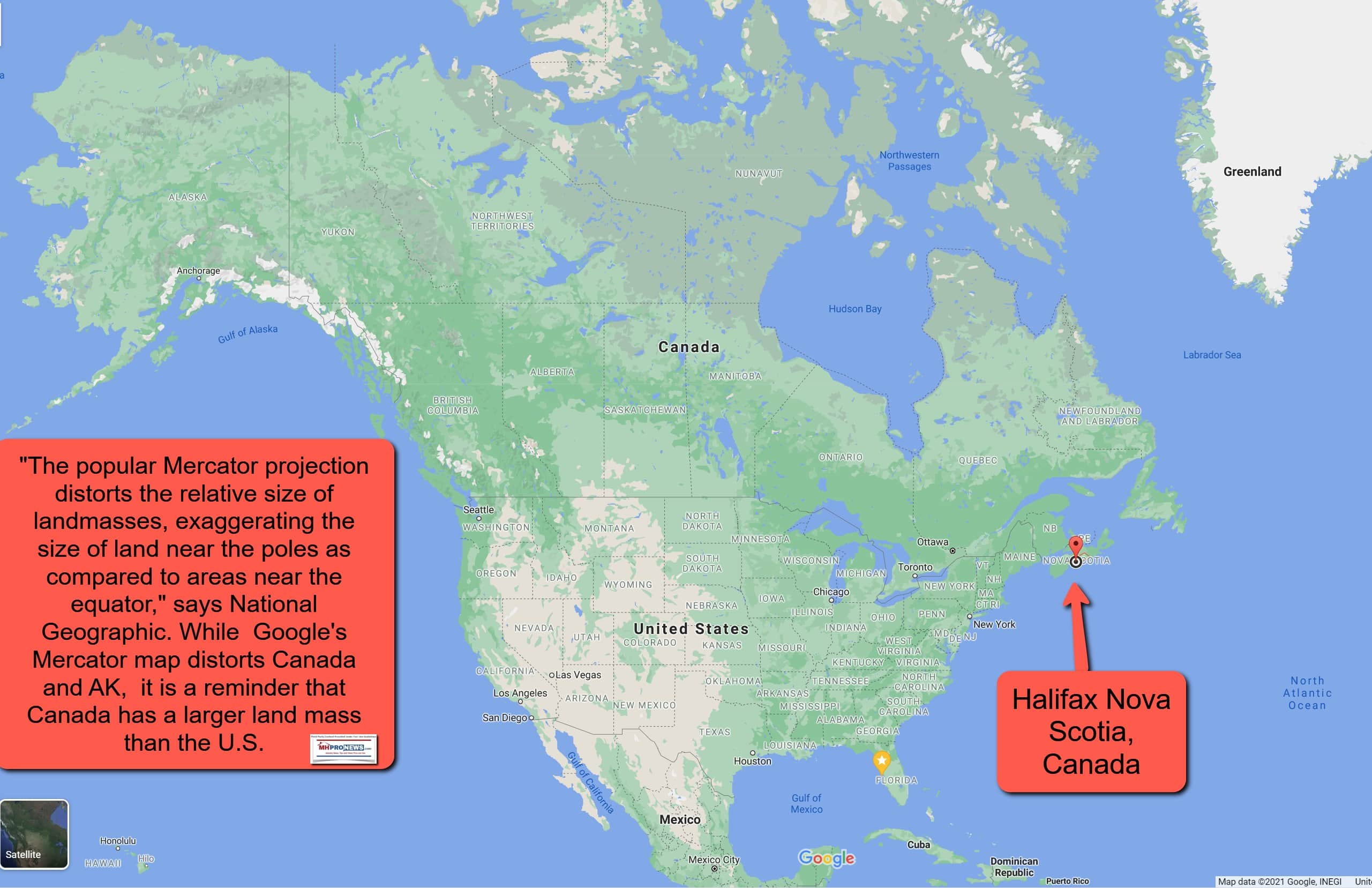
Kemp rhetorically asked, “Does “2 x 4 or 2 x 6 construction, full insulation, 25 years guaranteed roof, gyproc walls, all appliances” sound like the description of your home? Likely. The description of a manufactured home? Of course not; that’s a trailer! Sadly, most politicians, the media, and the general public would have that response.”
Kemp is a consultant who is also the executive director of the MHPOABC – the Manufactured Home Park Owners’ Alliance of British Columbia. He is seasoned advocate for the industry and its professionals.
To get the feel of the problems up north of the Canadian-U.S. border, two videos set the stage for discussions of what some there call the “missing middle.” That “missing middle” is described in a YouTube news video as: “Housing that is bigger than a shoebox condo but smaller than a single-family detached home is referred to as the “missing middle.” They are routinely speaking about conventionally built, high density, multifamily housing.
“Some observers say Toronto has been plagued with a lack of such housing for decades. They argue supply in this part of the market needs to be addressed, as that’s part of what drives the ongoing march of higher prices.”
But Kemp takes this discussion of affordable housing in a completely different direction than small sized units that are often in high-rise multifamily buildings.
As the executive director of what is said to be Canada’s only community owners trade association, Kemp is quite familiar with the dynamics of housing costs. He advocates for consideration of the “invisible alternative” of modern manufactured housing.
Asked by MHProNews to weigh in on “missing middle” and related comparisons and lessons to be gleaned from his experience and manufactured home vs. multifamily housing research like that shown in the report linked below, Kemp provided a detailed response.
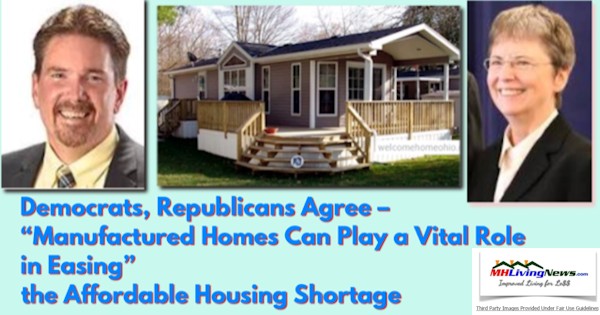
The base graphic below was provided by Kemp, along with other information he sent via email. The collage and illustration on that graphic were arranged by MHProNews to bring the data into sharper focus.
Said Kemp to MHProNews about the Halifax project and related affordable housing discussion:
I was consulted for some basic information when this [Halifax, Nova Scotia] project was in the pre-planning stage. Even though it is on the other side of the country – equivalent to Seattle to Boston and then some – we are the only manufactured home community owners organization in Canada.
Sadly I have to say this project is an anomaly. Manufactured home communities are the “affordable middle” but are still viewed with either skepticism or the outdated “trailer trash” stereotype, or other reasons that I will comment on. One example of the resistance, reluctance, or ignorance was my attempts to get a previous Housing Minister (Cabinet level) to understand that our industry provides an affordable housing alternative. After two meetings, she refused to meet with me and declined to be a speaker at a conference that was scheduled about 6 months after we sent the invitation! A small town mayor once told me “There are 3 trailer parks in our town and I’d like to get rid of all 4 of them.”
There is definitely a different attitude toward MHCs in Canada than there appears to be in the US, particularly southern (warm) States. However, aside from politics and stereotypes, there are three reasons why new MHCs are not being developed:
- lack of political will, i.e. recognition that MHCs provide a viable affordable housing ownership alternative, refusal to change zoning regulations, etc.
- they generally are not the highest and best use of the available land. The second video you sent referred to building up to 2000 rental units on 0.6 acres of land. 0.6 acres would accommodate 4 or 5 manufactured homes!
- mostly consequent to the first two reasons, there are no investors or developers looking to build MHCs
When I’m dealing with politicians or responding to media, I use this simple table to demonstrate the difference between and MHC and an apartment building:”
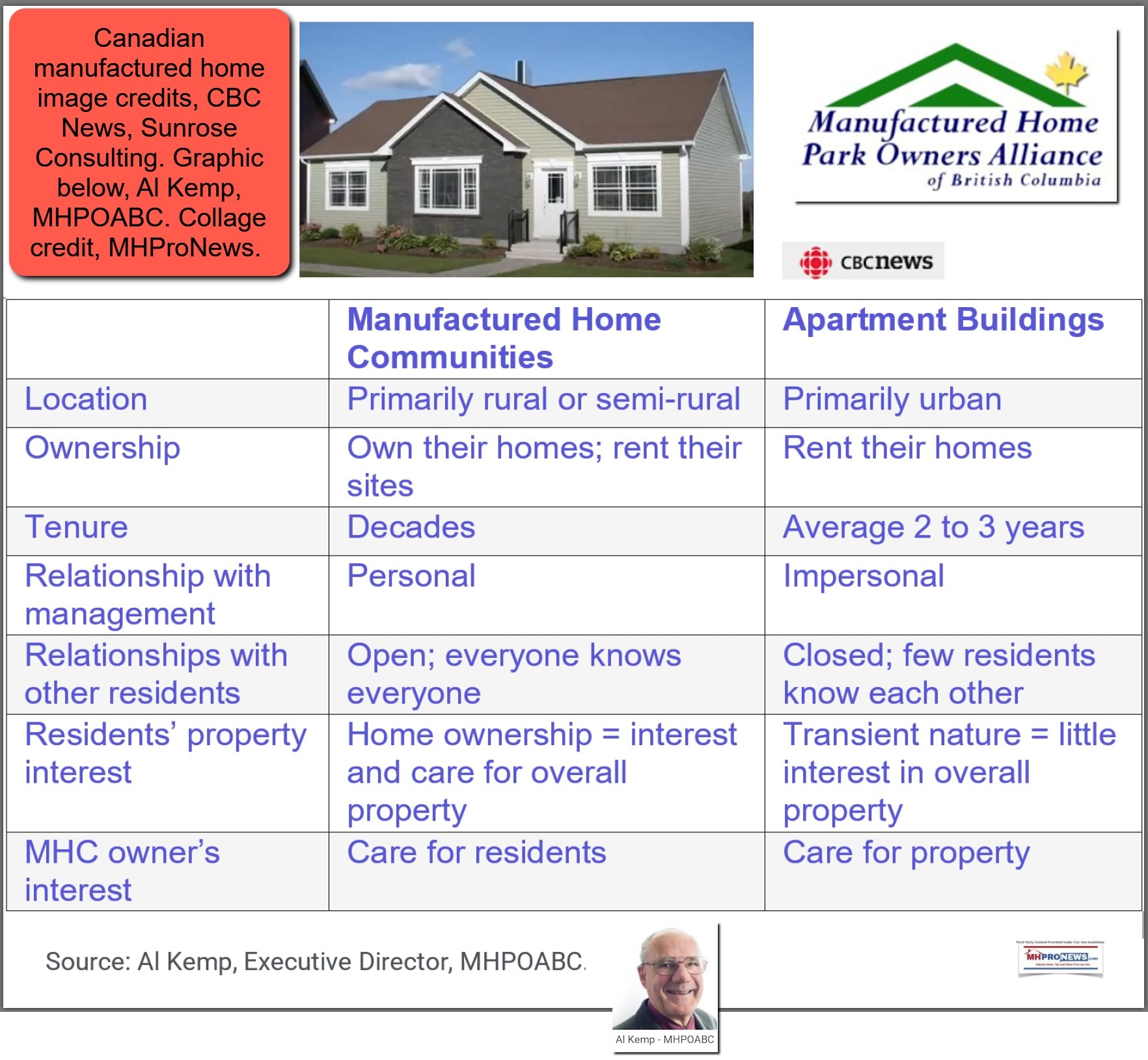
Kemp elaborated further by saying that: “The article by the Minnesota politicians is interesting and not dissimilar to the situation in Canada, except that I don’t think there would be any appetite – or even much demand – to adopt the cooperative model here. Most MHCs are owned as long term investments, aka a couple’s retirement plan.” That MN report Kemp referenced was provided above, and for reader convenience, is provided once more here.
Kemp also provided some additional information on what he called “Manufactured Homes – the Invisible Housing Alternative.”
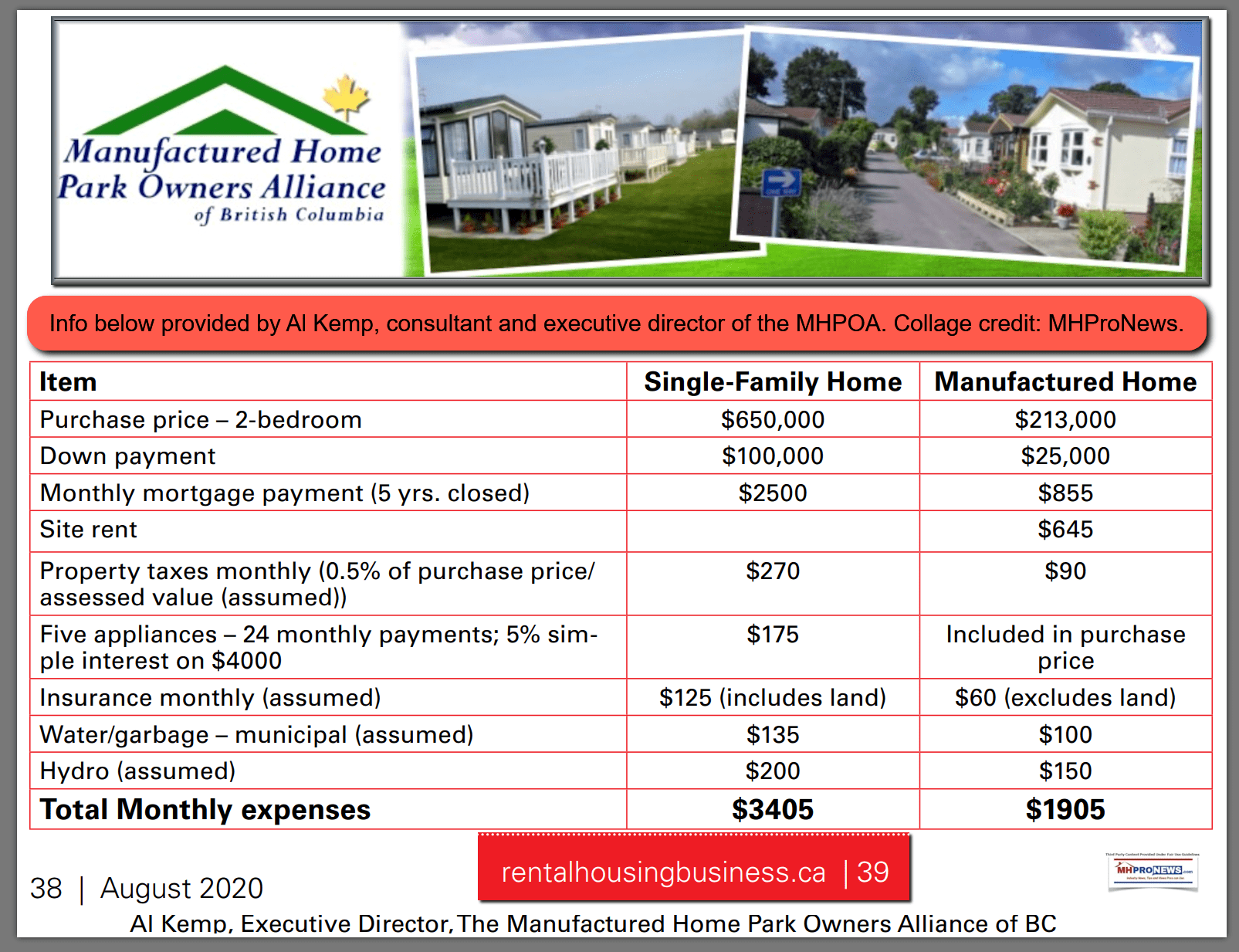
He described that as making the “economic case for owning a manufactured home vs. buying a comparably sized bungalow.” The base image in the graphic above was provided by Kemp, while the other illustrations were added by MHProNews with the appropriate credits to bring the information to life for the sake of newcomers or those outsiders peering into the industry.
Additional Information, MHProNews Analysis and Commentary
In no particular order of importance, what Kemp and the CBC report linked here reflect are the similarities and the distinctions between the Canadian and U.S. affordable housing crisis.
Public sentiment towards our segment of affordable housing and the role that manufactured homes are playing – or more often are not playing – in the growing crisis are also highlighted.
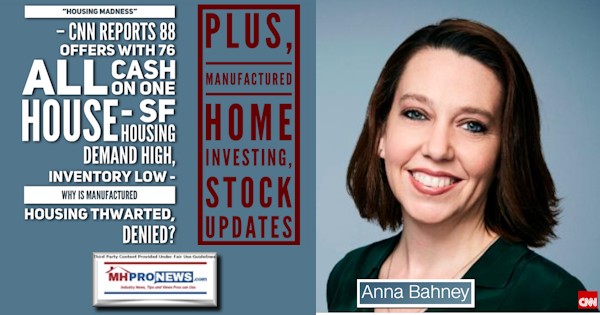
In the U.S., the real estate and single family housing building markets are red hot, as CNN and numerous other sources have reported. But even with a large price advantage, unlike conventional housing, HUD Code manufactured homes in the U.S. are now into their third year-over-year slide that began in late 2018.
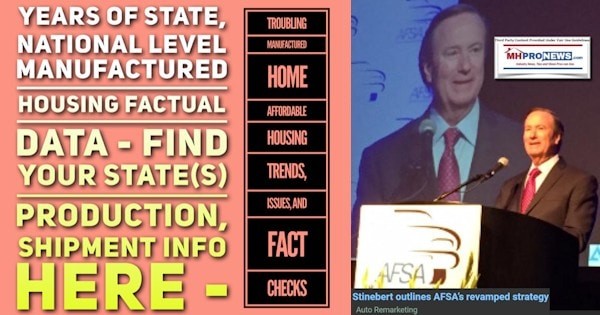
Sadly, the evidence suggests that in the U.S., manufactured housing data reflects a noticeable and steady dip since about the same time in 2018 that Manufactured Housing Institute (MHI) announced their much ballyhooed “new class” of manufactured homes that they later renamed as “CrossModTM” homes.
Despite the initial and ongoing hype from the Arlington, VA based MHI, the data and informed sources at the Government Sponsored Enterprises (GSEs) and within MHI itself say that the program has virtually no traction. Sales are reportedly in the low double digits in the most recent year. In a market of some 95,000 homes annually, that is nearly nothing. Or, as an MHI member-builder told MHProNews – he sees “no traction” for the Clayton Homes supported and MHI branded “CrossModTM” project.
Ironically, it is a modular producing association leader that reflected several disconnects in MHI’s logic, methodology, and approach.
Perhaps uncomfortable with the facts, once responsive MHI and some of their major brands have more recently dodged questions from MHProNews about performance and accountability for the troubling trends.
By comparison, whenever asked, MHPOABC’s Al Kemp has routinely weighed in on topics promptly and candidly. He has done so even if the information may not be what a target audience wants to read or hear.
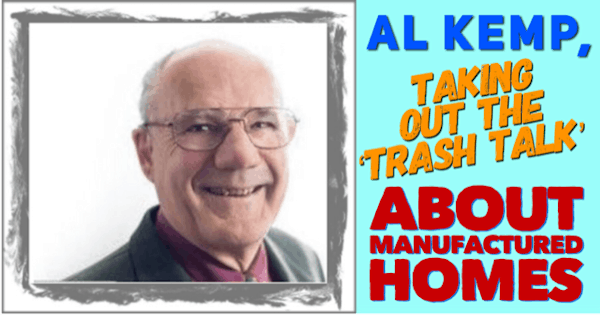
Examples of Kemp’s willingness to weigh in on thorny issues are shown above and below.

In this, Kemp is more like the Manufactured Housing Association for Regulatory Reform (MHARR).
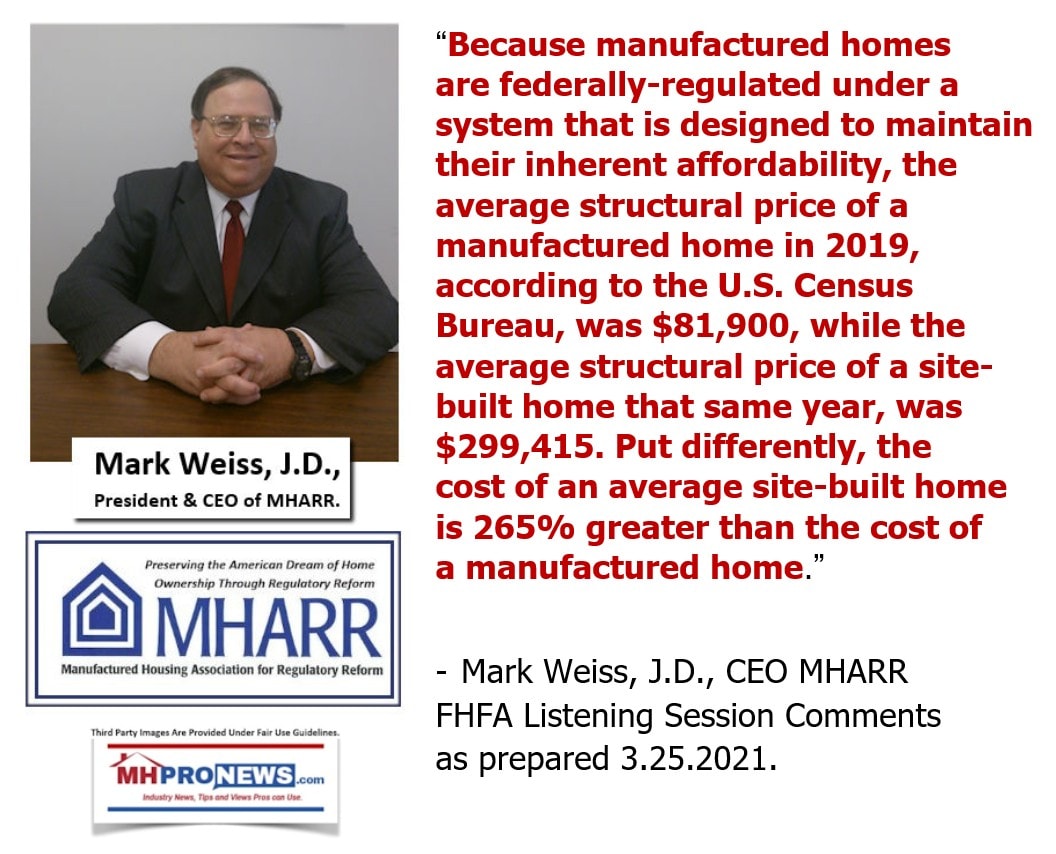
The Modular Home Builders Association (MHBA) and MHARR have weighed in when asked, in routinely on the record statements to MHProNews in numerous cases. They have also done so in a routinely timely manner. Ditto that evidence-based observation with Kemp.
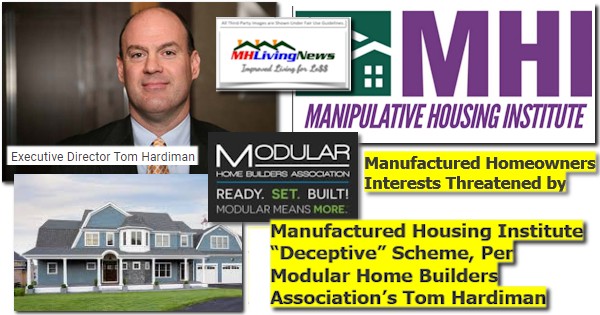
A veteran Canadian factory-built home industry source has told MHProNews that they do not have an equivalent to the Manufactured Housing Improvement Act of 2000 (MHIA or 2000 Reform law). That source also said they would love to have such a law up north, as it would make their life much easier.
But here in the U.S., while paying lip service to the MHIA and enhanced preemption, MHI and some of their state affiliates fail to press the legal advantages that the 2000 Reform law makes possible. Even MHI’s own affiliates have made it clear that despite the useful federal law, matters in the U.S. are getting worse, not better. The obvious reason is because the law is not being enforced.
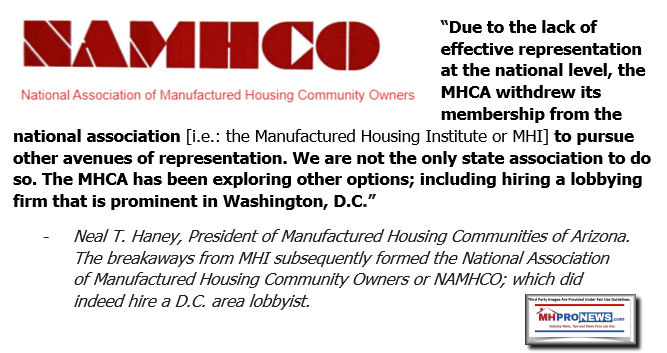
As a result, instead of seeing a surge in manufactured housing akin to what is occurring in conventional building, and split by the mixed messaging of “quality” manufactured homes that far more costly CrossModTM homes are supposed to represent, and mainstream manufactured housing, the industry has witnessed a failure in traction on their new pitch, and has presided over a decline in what Kevin Clayton once colorfully defended as the segment of the industry that brought manufactured housing to the affordable housing dance.
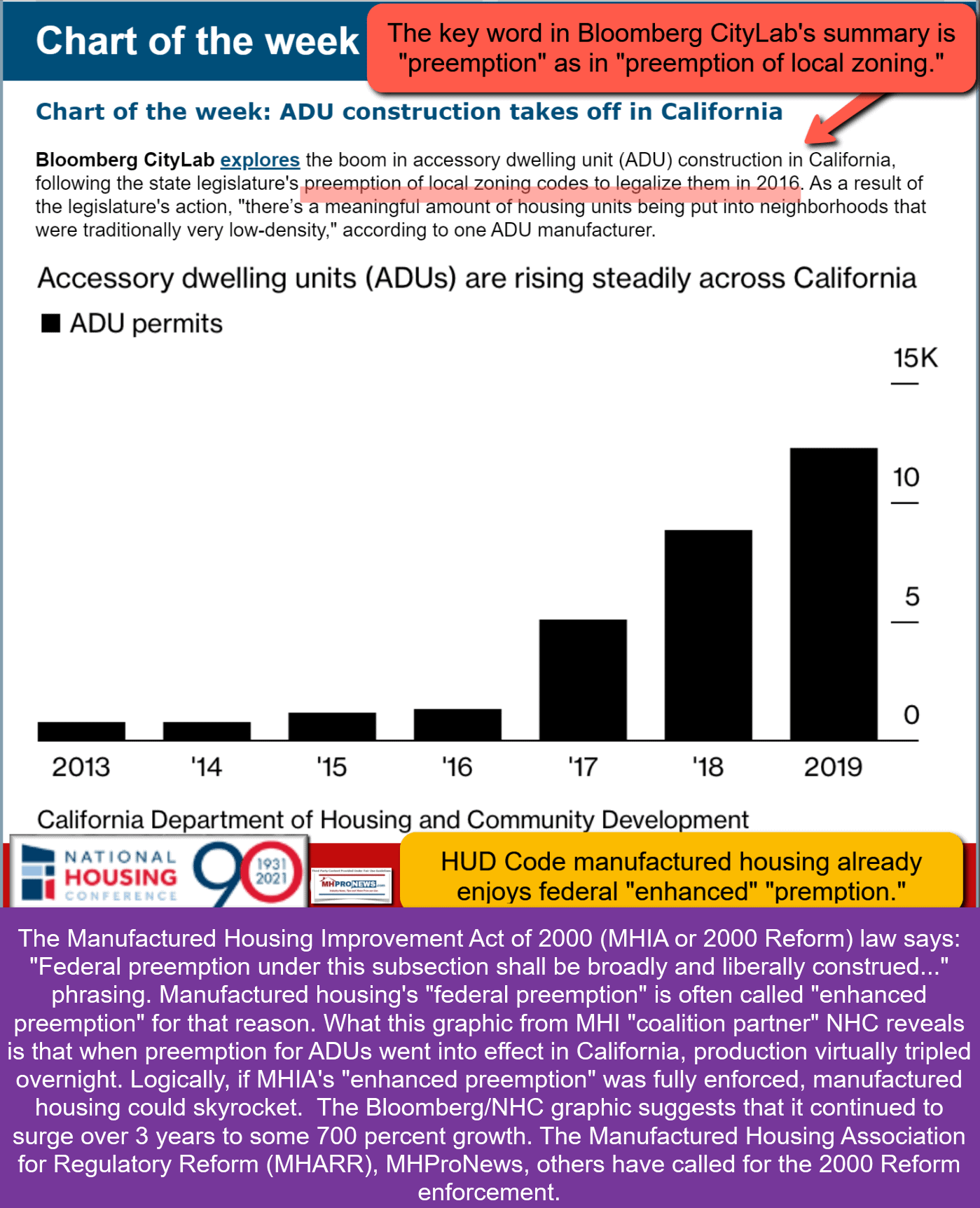
The bottom lines?
There are many possible takeaways. In the USA, one certainly should be that failure to learn the lessons of the last two decades and appropriately change course – following the wrong voices and arguably errant ‘leadership’ – are costing the manufactured home industry here in the U.S. billions of dollars a year.

To learn more, see the related reports linked herein above, below, and following the byline and notices.

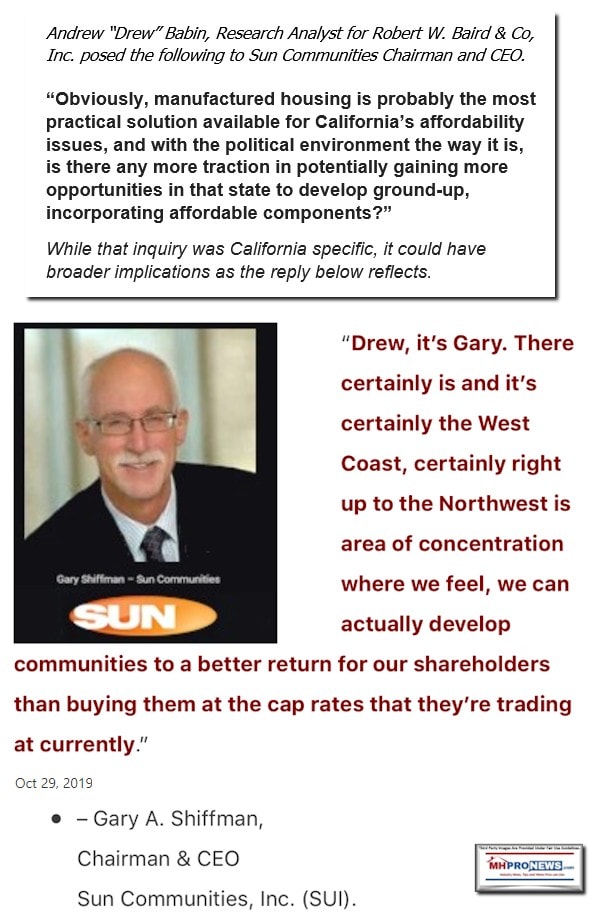

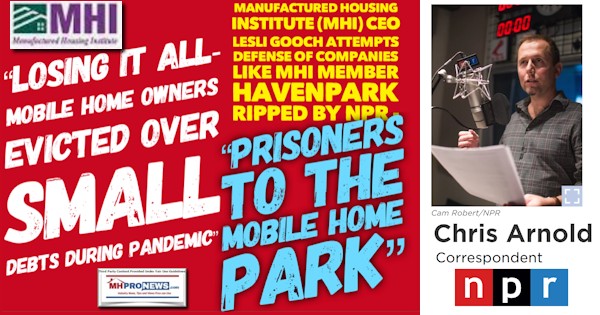

Stay tuned for more of what is ‘behind the curtains’ as well as what is obvious and in-your-face reports. It is all here, at the runaway largest and most-read source for authentic manufactured home “News through the lens of manufactured homes and factory-built housing” © where “We Provide, You Decide.” © ## (Affordable housing, manufactured homes, reports, fact-checks, analysis, and commentary. Third-party images or content are provided under fair use guidelines for media.) (See Related Reports, further below. Text/image boxes often are hot-linked to other reports that can be access by clicking on them.)

By L.A. “Tony” Kovach – for MHProNews.com.
Tony earned a journalism scholarship and earned numerous awards in history and in manufactured housing.
For example, he earned the prestigious Lottinville Award in history from the University of Oklahoma, where he studied history and business management. He’s a managing member and co-founder of LifeStyle Factory Homes, LLC, the parent company to MHProNews, and MHLivingNews.com.
This article reflects the LLC’s and/or the writer’s position, and may or may not reflect the views of sponsors or supporters.
Connect on LinkedIn: http://www.linkedin.com/in/latonykovach
Related References:
The text/image boxes below are linked to other reports, which can be accessed by clicking on them.

